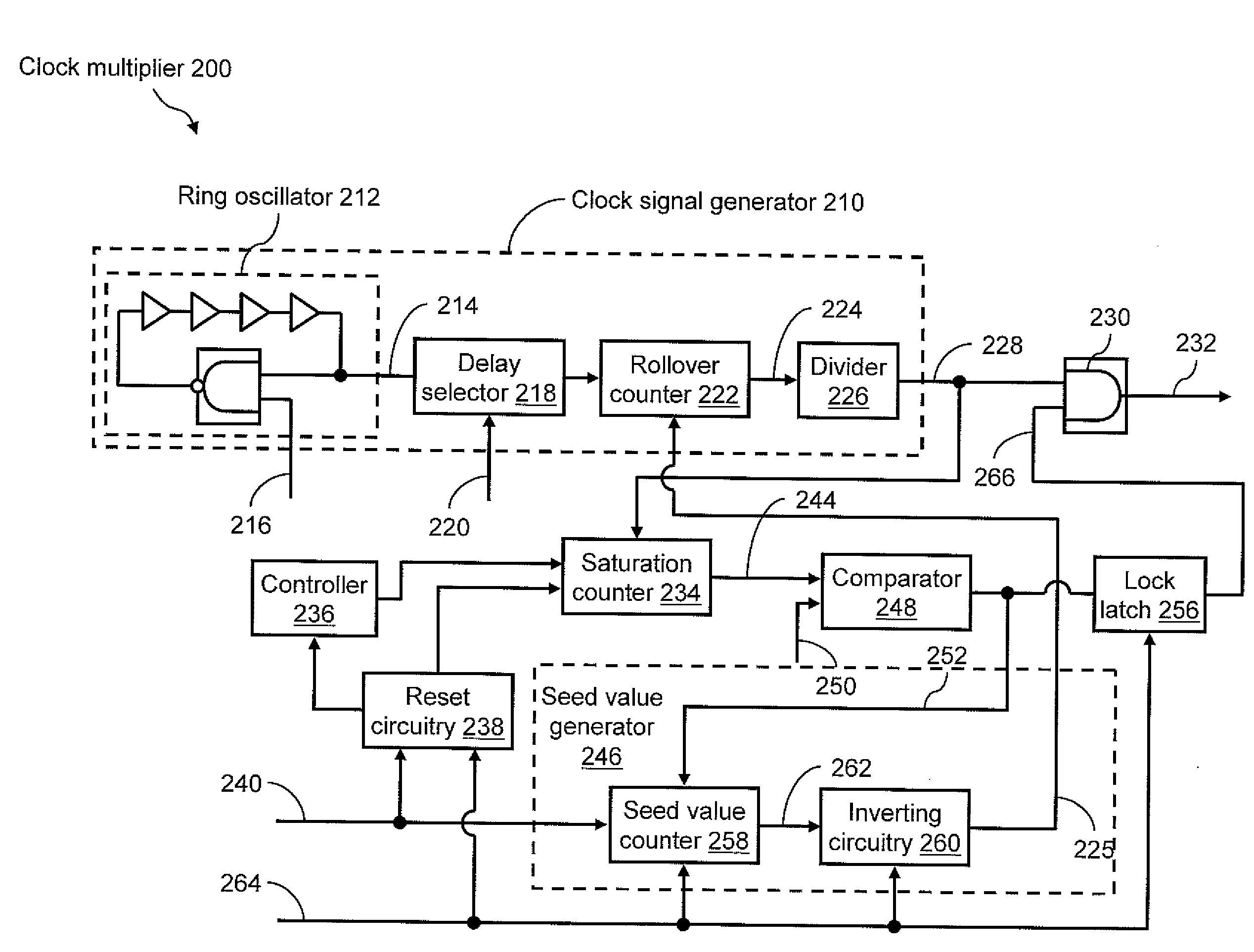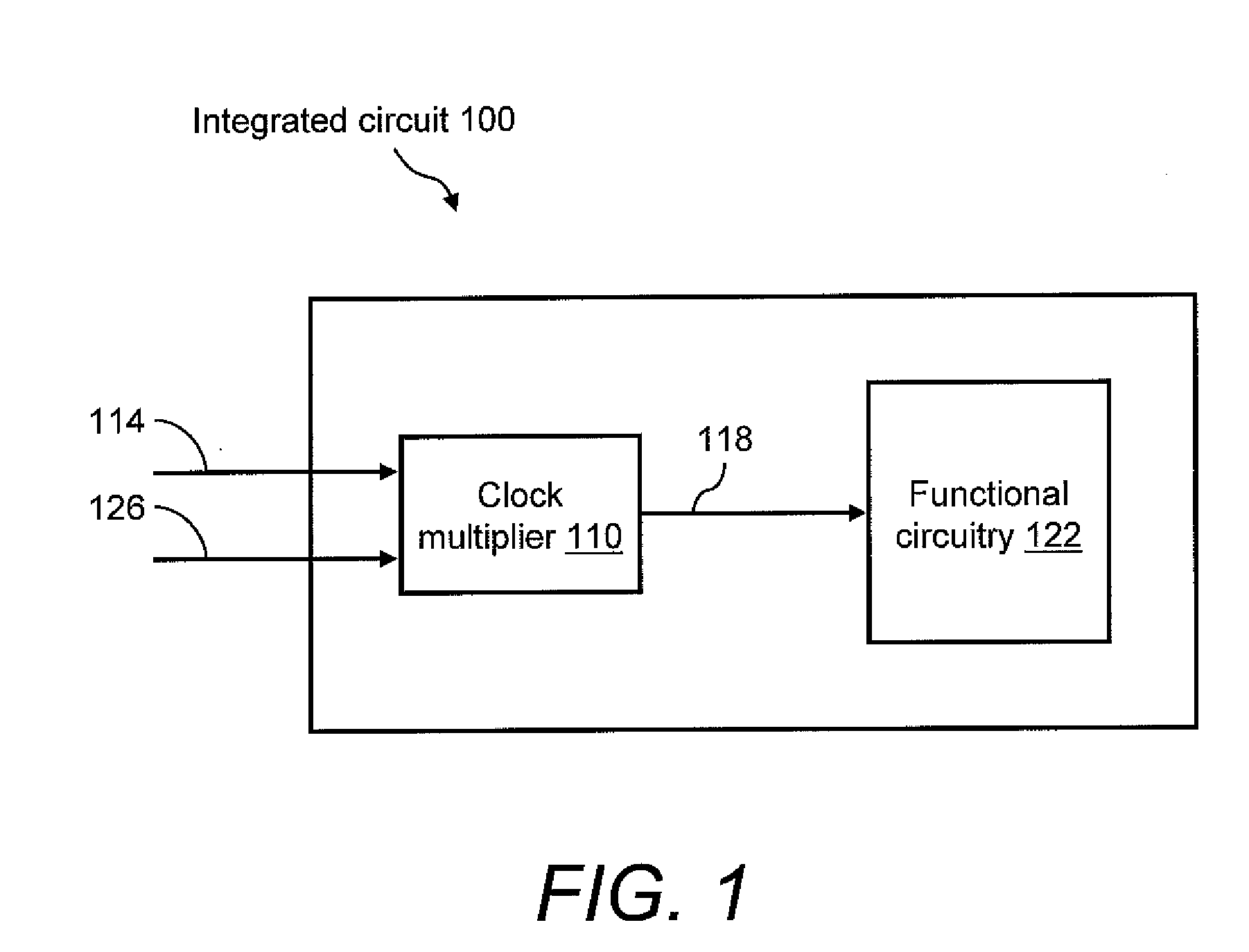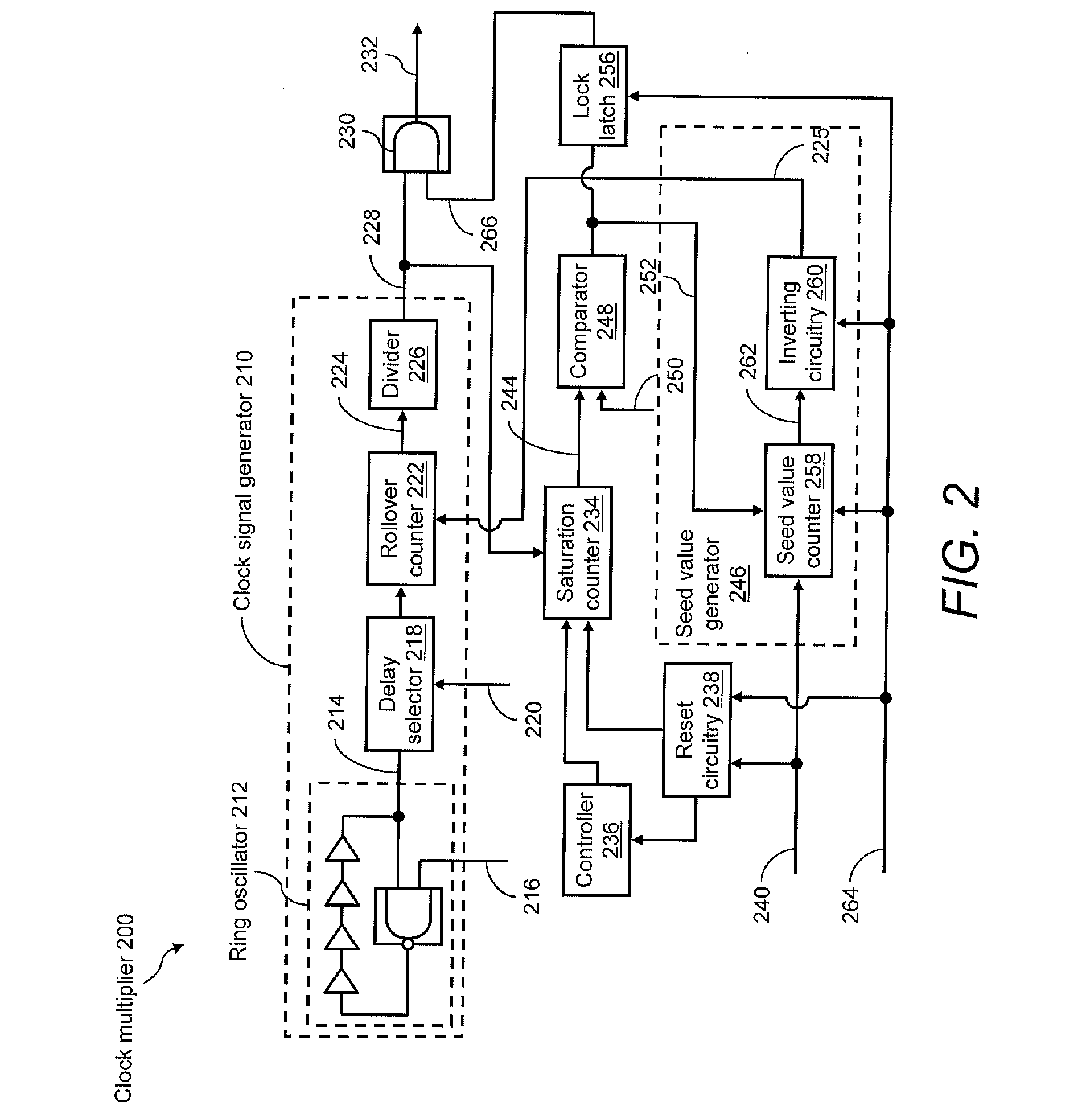Small scale clock multiplier circuit for fixed speed testing
a multiplier circuit and small scale technology, applied in oscillator generators, generating/distributing signals, pulse techniques, etc., can solve the problems of increasing the difficulty of cost-effectively testing high-speed memories, requiring a relatively significant amount of space on the chip of internal plls, and reducing the efficiency of testing high-speed memories
- Summary
- Abstract
- Description
- Claims
- Application Information
AI Technical Summary
Problems solved by technology
Method used
Image
Examples
Embodiment Construction
[0010]FIG. 1 illustrates an integrated circuit 100 that includes a clock multiplier 110 for generating a fast clock from a slow clock. Clock multiplier 110 is fed by an input clock signal to be multiplied, such as test clock signal 114, and provides an output clock signal 118 having a frequency greater than the frequency of test clock signal 114 by a certain predetermined multiple, which may be fixed or programmable. Output clock signal 118 may be provided to functional circuitry 122, which may be any suitable functional circuitry, such as one or more dynamic random access memories (DRAMs), SRAMS, Memory BISTs, applications specific circuits, etc.
[0011]In two examples, the multiplier is 32 and 8, respectively. The first example may be pertinent, for example, to a burn-in test that requires the output clock signal 118 to have a period no greater than 20 ns but where the test cycle time is about 300 ns, i.e., the frequency of test clock signal 114 is about 333 kHz. Such a burn-in test...
PUM
 Login to View More
Login to View More Abstract
Description
Claims
Application Information
 Login to View More
Login to View More - R&D
- Intellectual Property
- Life Sciences
- Materials
- Tech Scout
- Unparalleled Data Quality
- Higher Quality Content
- 60% Fewer Hallucinations
Browse by: Latest US Patents, China's latest patents, Technical Efficacy Thesaurus, Application Domain, Technology Topic, Popular Technical Reports.
© 2025 PatSnap. All rights reserved.Legal|Privacy policy|Modern Slavery Act Transparency Statement|Sitemap|About US| Contact US: help@patsnap.com



